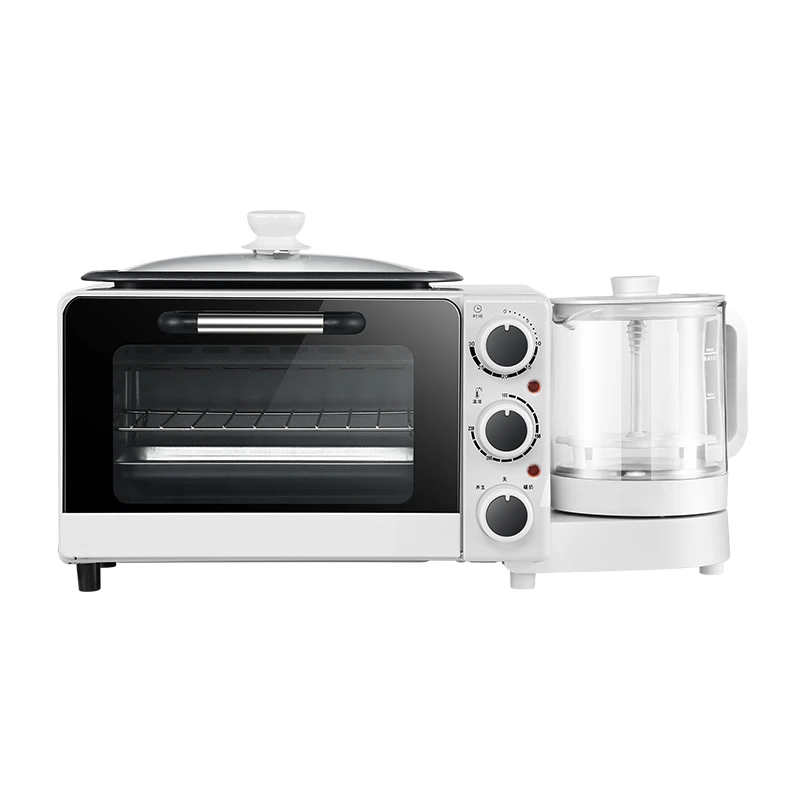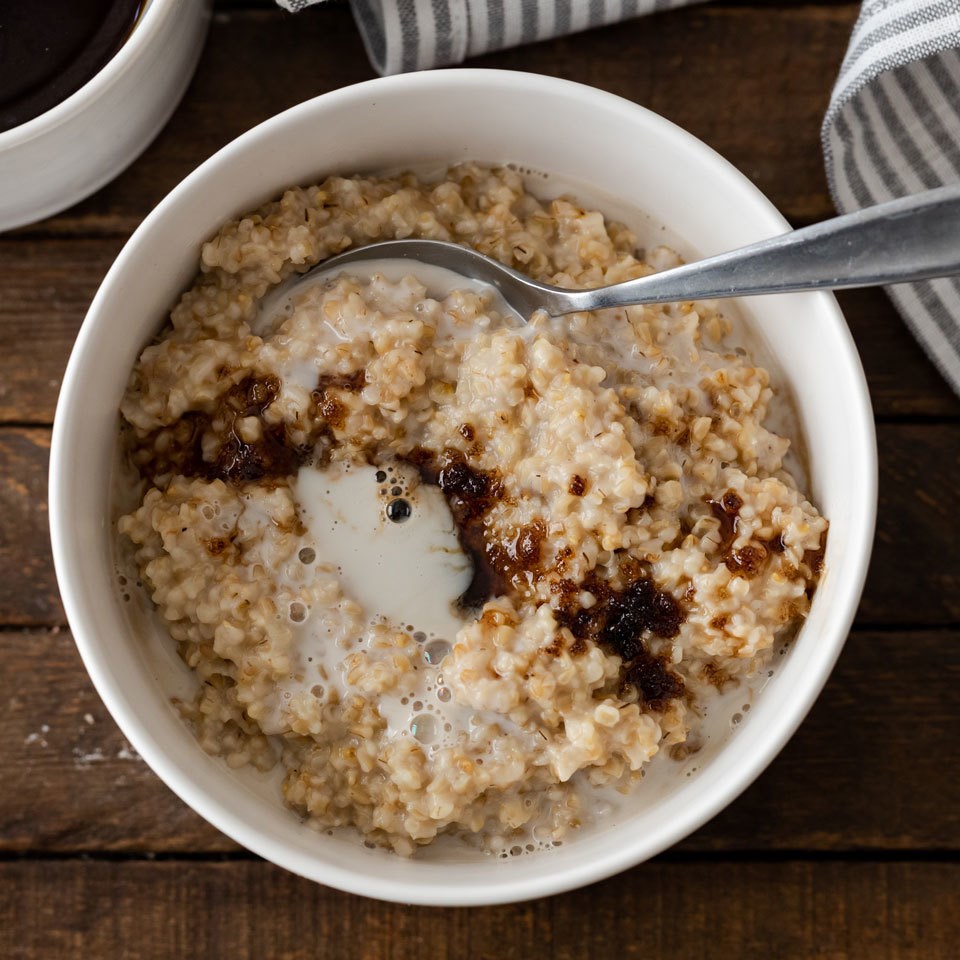Microwaving oatmeal is a quick and convenient way to prepare breakfast, but it can come with an annoying downside—boiling over. Nothing is more frustrating than opening the microwave door to find a mess of oatmeal splattered everywhere. So how do you keep oatmeal from boiling over in the microwave? This question has baffled many breakfast enthusiasts, but the good news is that there are simple, effective strategies you can employ to prevent this from happening. In the following sections, we’ll explore practical tips and techniques to ensure your oatmeal stays in the bowl where it belongs.
Understanding the Science Behind Boiling Over
Grasping why oatmeal boils over can help in preventing it.
Starch and Water Interaction
Oatmeal boils over primarily due to the interaction between starch and water. When oatmeal cooks, the starch in the oats absorbs water and swells. As the mixture heats up, the water starts to evaporate and form bubbles. These bubbles get trapped in the thickening starch mixture, causing it to expand and eventually overflow. The combination of water turning into steam and the thickening starch creates a perfect environment for spilling over.
Rapid Heating
Microwaves heat food quickly and unevenly, which exacerbates the boiling over problem. Unlike stovetop cooking, where you can control the heat and stir continuously to prevent boiling, microwaving leaves the oatmeal unattended. This is why microwaving oatmeal is more prone to boiling over as the rapid heat causes quick bubble formation, making it harder to contain within the bowl.
Choosing the Right Bowl
The container you use plays a crucial role in preventing oatmeal from boiling over.
Size and Depth
Choosing a bowl that is larger and deeper than you think you need is key. The extra space allows the oatmeal to expand without spilling over the sides. Ideally, the bowl should be at least twice the volume of the oatmeal mixture. This gives the oatmeal room to bubble up without reaching the top of the bowl. It’s also essential to use a wide bowl rather than a narrow one, as the larger surface area allows better heat distribution.
Microwave-Safe Material
Ensure the bowl is microwave-safe to avoid any damage to your dishware or microwave. Glass and ceramic bowls are often good choices for this purpose. Using a microwave-safe bowl ensures that it can withstand the high temperatures without cracking or leaching harmful chemicals into your food. Avoid using plastic bowls unless they are labeled microwave-safe, as some plastics can warp or melt, leading to spills and potential messes.
Adjusting the Cooking Time and Power Level
Tweaking the microwave settings can make a significant difference.
Lower Power Setting
Cooking oatmeal on a lower power setting helps to heat it more evenly and slowly, reducing the chances of boiling over. Start by microwaving on 50-70% power and adjust as needed. Lower power allows the oatmeal to cook gradually, minimizing the rapid bubble formation that leads to spills. Each microwave is different, so experiment with the settings until you find the sweet spot that cooks your oatmeal without boiling over.
Short Intervals
Instead of setting the microwave for a long cooking time, use shorter intervals and stir the oatmeal in between. For example, microwave for 30-second intervals and stir each time until the desired consistency is reached. This method helps distribute the heat more evenly and allows you to catch any signs of boiling over before it happens. By breaking up the cooking time, you can more precisely control the oatmeal’s temperature and consistency.
Stirring and Monitoring
Keeping an eye on your oatmeal can prevent it from making a mess.
Frequent Stirring
Frequent stirring is a key strategy for how to keep oatmeal from boiling over in the microwave. By distributing the heat more evenly, stirring every 30 seconds helps maintain a smooth texture and prevents hot spots that can cause oatmeal to spill over the bowl’s edge. This practice also integrates any thickened parts back into the mixture, promoting even cooking and significantly reducing the risk of boil-over.
Standby Mode
If you notice the oatmeal starting to rise too much, open the microwave door for a moment to let the bubbles settle. This quick pause can prevent overflow. By interrupting the cooking process, you allow the trapped steam to escape, preventing it from building up to the point where it causes the oatmeal to spill over. This method is particularly useful if you don’t want to adjust the power settings or cooking duration.
Modifying the Oat-to-Liquid Ratio
The consistency of your oatmeal mixture affects how it behaves in the microwave.
Adjusting Liquid Levels
Using less liquid can make a thicker oatmeal that is less likely to boil over. Start with the recommended amount and reduce slightly if boiling over continues to be a problem. Thicker oatmeal has less water content, which means fewer steam bubbles and a lower chance of overflow. However, be cautious not to make it too thick, as this can affect the texture and taste of the oatmeal.
Added Ingredients
Adding a pinch of salt or a small amount of butter can help break the surface tension of the boiling liquid, reducing the chances of oatmeal boiling over. These ingredients alter the boiling point and bubble formation, making it less likely for the mixture to overflow. Additionally, they can enhance the flavor of your oatmeal, providing a double benefit.
Using Microwave Covers and Lids
Sometimes, a simple tool can make all the difference.
Ventilated Covers
Using a microwave-safe cover with ventilation holes allows steam to escape while keeping the oatmeal contained. This can significantly reduce the risk of boiling over. These covers are designed to let out just enough steam to prevent pressure build-up while keeping the oatmeal from spilling over. They often have adjustable vents, allowing you to customize the steam release.
Plate or Paper Towel
If you don’t have a microwave cover, placing a microwave-safe plate or paper towel over the bowl can also help keep the oatmeal from spilling over while letting steam escape. This method is a quick and easy solution if you don’t have a specialized cover. It helps contain the oatmeal and catches any minor spills, making cleanup easier.
 Trying Different Oatmeal Types
Trying Different Oatmeal Types
Different types of oats behave differently when microwaved.
Quick Oats vs. Rolled Oats
Quick oats tend to cook faster and are more prone to boiling over compared to rolled oats. If you frequently have this issue, consider switching to rolled oats, which cook more slowly and are less likely to overflow. Rolled oats take a bit longer to cook but offer a more controlled cooking process, making them less susceptible to rapid boiling and spilling.
Instant Oats
Instant oats are often pre-cooked and require less time in the microwave. They are less likely to boil over but can become mushy if not watched closely. If you opt for instant oats, pay careful attention to the cooking time and be ready to stop the microwave if the oatmeal starts to rise too quickly. Instant oats can be a convenient option if you need a quick breakfast without the hassle of monitoring for boil-over.
Cooling Down Phase
Once the oatmeal is cooked, managing its cooling down is also essential.
Letting It Sit
After microwaving, let the oatmeal sit for a minute or so before eating. This allows it to thicken and cool slightly, preventing any last-minute eruptions. Allowing the oatmeal to sit helps stabilize its consistency and makes it safer to handle and eat. The cooling period also helps any remaining bubbles to settle, reducing the risk of late boil-over incidents.
Stirring Again
Giving the oatmeal a final stir after microwaving can help release any trapped steam and even out the consistency. This ensures a smoother texture and redistributes any thickened parts, making your oatmeal more enjoyable. A final stir can also help incorporate any add-ins you might want to mix in after cooking, such as fruits or nuts.
Nutritious Add-ins and Their Impact
Adding ingredients for nutrition and flavor can also impact the oatmeal’s behavior.
Fruits and Nuts
Fruits and nuts can add both flavor and texture to oatmeal. However, adding them before microwaving can introduce extra moisture, contributing to boiling over. Consider adding these ingredients after cooking. By doing so, you can enhance the flavor and nutritional value of your oatmeal without increasing the risk of spills.
Milk and Dairy Substitutes
Milk and dairy substitutes can make oatmeal creamier but also more prone to boiling over. Use slightly less liquid if you prefer a creamier oatmeal to maintain control over the cooking process. Dairy products tend to foam when heated, which can contribute to boil-over. Adjusting the liquid ratio helps manage this issue while still providing the desired creaminess.
Summarizing the Insights:
How to keep oatmeal from boiling over in microwave
So, how do you keep oatmeal from boiling over in the microwave? By understanding the science behind it, choosing the right bowl, adjusting cooking times and power levels, stirring frequently, using the proper oat-to-liquid ratio, and incorporating additional tools and technology, you can effectively prevent this common kitchen frustration. Remember to experiment with different methods and document what works best for your specific situation. With these tips and guidelines, you can enjoy a perfectly cooked, hassle-free bowl of oatmeal every time.



